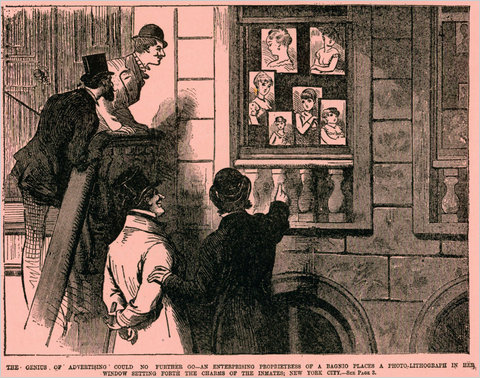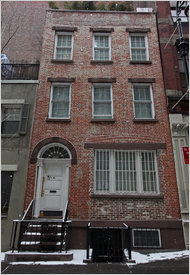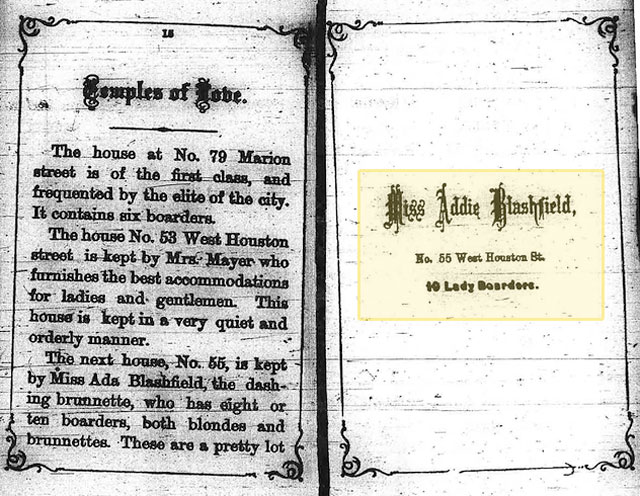Back in February, in my Before SoHo Was SoHo (Part I) post, I described the area during the early 1800’s, during its previous heyday as a commercial destination for well-to-do New Yorkers. By mid-century, while Broadway was still the “Fifth Avenue” of its day, bordellos began popping up on side streets, and the area that is now SoHo became New York’s first red light district:
These houses of “ill repute” were often luxurious. Guidebooks told potential customers where to seek their pleasures. Particularly informative listings could be found in the Directory to the Seraglios in New York, published by A Free Loveyer, in 1859:
Miss Clara Gordon No. 119 Mercer Street “We cannot too highly recommend this house, the lady herself is a perfect Venus: beautiful, entertaining, and supremely seductive. Her aidesdecamp are really charming and irresistible, and altogether honest and honorable. Miss G. is a great belle, and her mansion is patronized by Southern merchants and planters principally. She is highly accomplished, skillful, and prudent, and sees her visitors are well entertained. Good wines of the most elaborate brands, constantly on hand, and in all, a finer resort cannot be found in the City.”
Mrs. Bailey No. 76 Greene Street, below Spring “This quiet and comfortable resort is situated very central, and within a few moments’ walk of Broadway and the principal hotels… Gents must come well recommended or they won’t get in. . . The hostess is an agreeable lady, indued with a tasteful mind. . . Her young ladies behave with much prudence and propriety…”
(Exerpted from: SoHo A Guide by Helene Zucker Seeman and Alanna Siegfried, published by Neal-Schuman Publishers, Inc., New York, NY Copyright 1978)
Former brothel at 105 Mercer Street (photo: Marilynn K. Yee/The New York Times)
There was a high concentration of brothels along Houston Street and also Mercer Street, where the oldest still-standing (former) house of ill repute can be seen at number 105, now a private home. Many guidebooks were published for visitors to the area, with Zagat-style reviews, one of which was The Gentleman’s Directory, published anonymously in 1870 that can be seen in its entirety on the New York Times website. There were an estimated 500 brothels in New York City at the time of its publication.
After the Civil War, as New York’s commercial and entertainment centers began moving further uptown, to Union Square and then to what is now Times Square, the textile industry began moving into the area and remained until the 1950’s, when the first artists in search of large raw spaces began moving in. By the 1970’s the galleries had taken over, and by the 1990’s, the galleries had been replaced by retailers. If history is indeed cyclical, should we soon expect the ladies who lunch to be replaced by ladies of the night?



